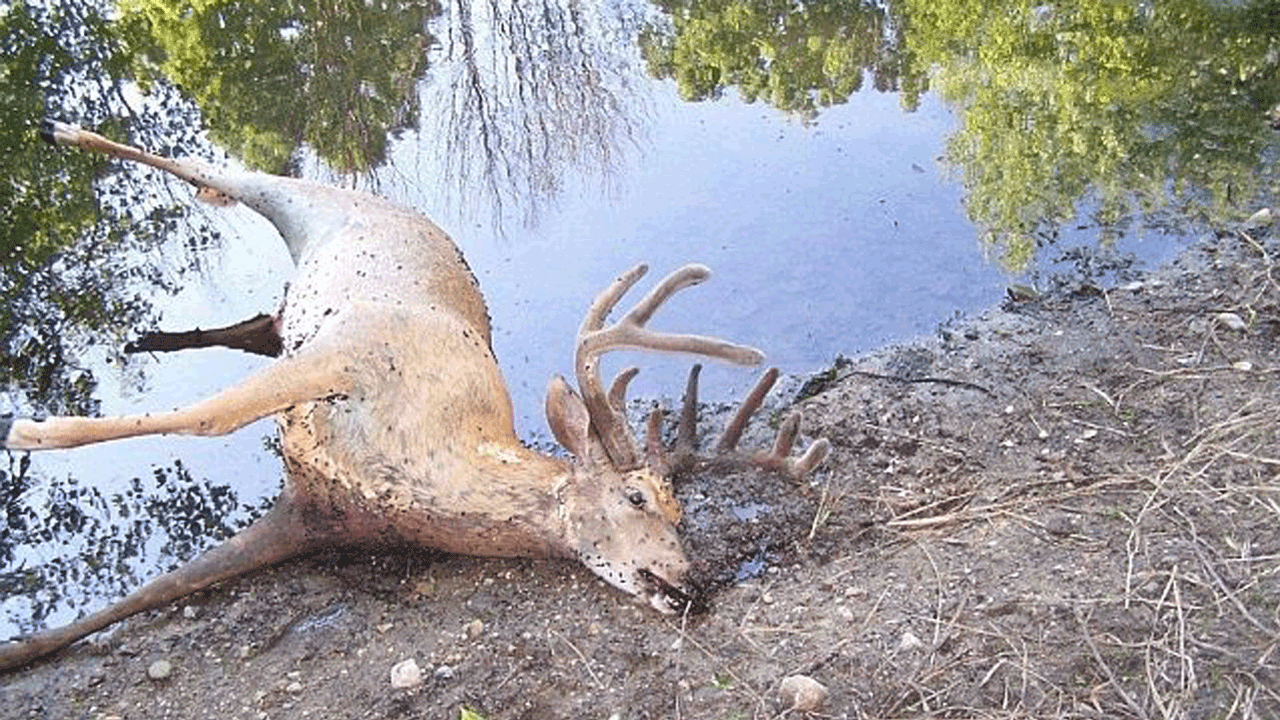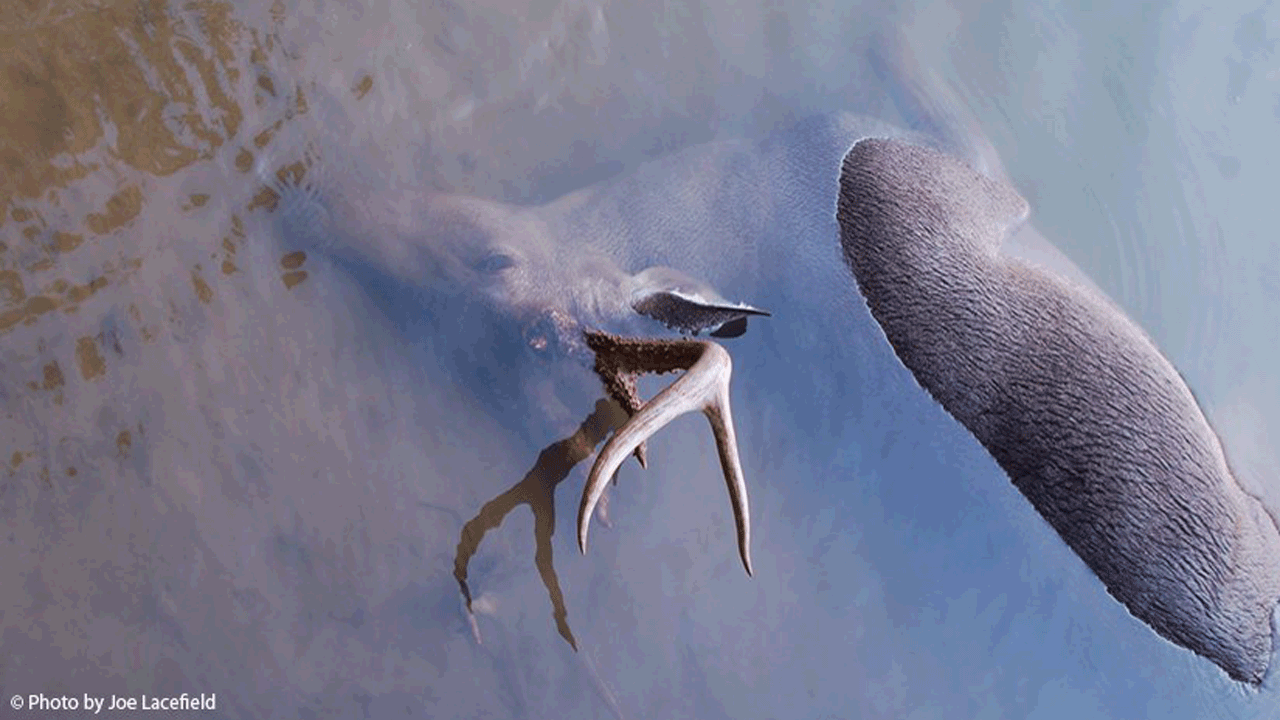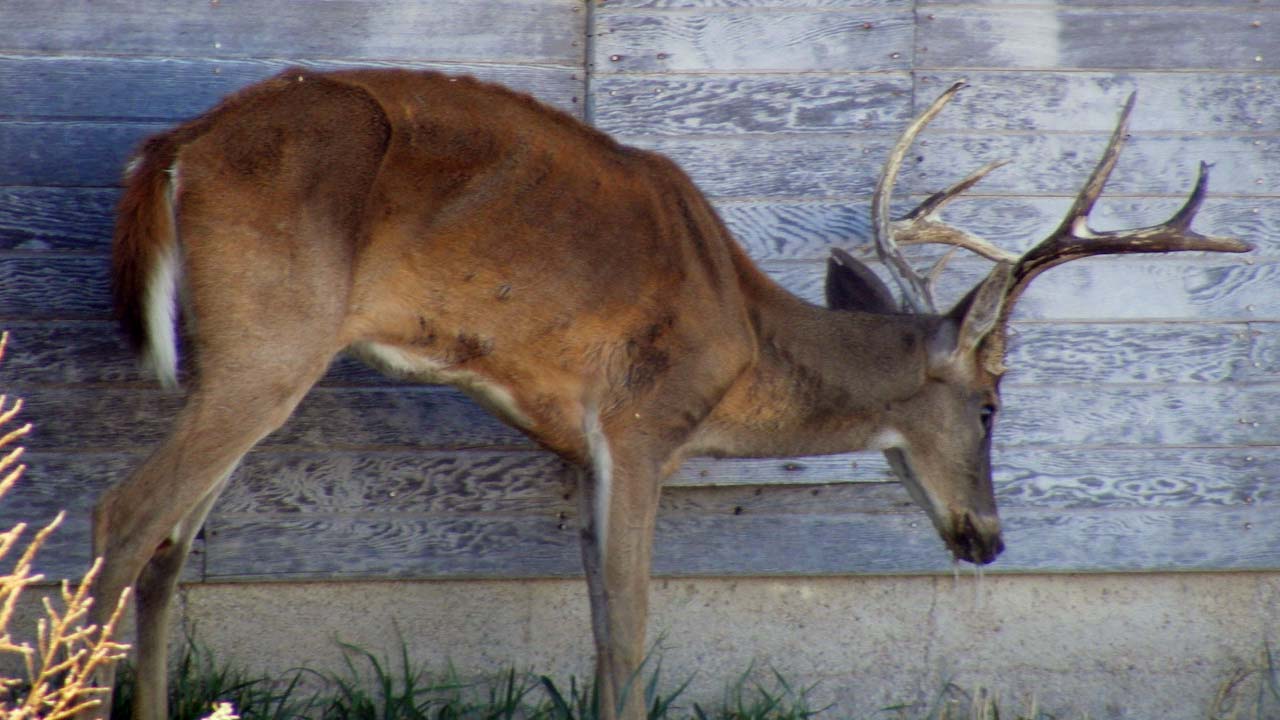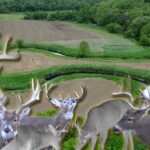EHD and CWD. The mere mention of these two diseases spreads doom and gloom around whitetail circles. They have each affected deer in the Midwest, as well as other deer species across the United States. Although affecting some of the same species and coordinates, causing many to mistakenly think they are the same thing, EHD and CWD are different in many ways. Here’s a look at the difference in EHD and CWD.
Epizootic Hemorrhagic Disease (EHD)
EHD is an illness spread by the Culicoides biting fly or midge and is typically spread during periods of drought or minimal rainfall. The reason for this is that the midge’s larvae hatch in the mud or extreme shallow water edges surrounding water sources, therefore, these areas are where the midges concentrate. During periods of drought, the soft, muddy areas where the water has receded make the perfect breeding ground for the midge – and are areas where deer must step in order to drink. For this reason, EHD is not noticed until the summer or early fall months, when water levels are lower.
Hemorrhaging and a lack of oxygen in the blood results in a blue appearance of the tongue, hence the name ‘bluetongue’. While EHD is often called bluetongue, it actually is not. The bluetongue virus is closely related to EHD, and has similar signs, and is also spread by midges, but it is a different disease.

EHD infected deer will typically seek out water. (Photo: QDMA)
Bluetongue is a serious disease in cattle, as well as other ruminants. Testing is required to be able to tell the difference, but for deer hunters, it is EHD that we are all actually dealing with. EHD can take its victims quickly. 8 to 36 hours following visible symptoms, deer enter a state of shock and can perish.
EHD is not always fatal, however. Some deer survive the disease by being able to withstand its effects until it passes. Telltale signs of a survivor include curved or misshapen hooves. Also, a hard frost kills the midges, so the disease cannot be contracted after about October, depending on where you live.
EHD affects most areas to some degree, but in the last decade has had profound effects throughout much of the whitetails range, specifically in areas of the Midwest. It can literally seem to wipe out most of the deer in small pockets of areas, while a mere handful of miles away, the herd is unaffected.
Summers with higher levels of rainfall and/or an early frost can certainly help reduce the effects of EHD on a local deer population.
There seems to be no danger of a person ingesting the meat of an animal that had EHD.

EHD and CWD are both deadly diseases impacting whitetail deer.
Chronic Wasting Disease (CWD)
Chronic Wasting Disease (CWD) is something entirely different. It is a transmissible spongiform encephalopathy (TSE) found in mule deer, whitetail deer, elk, moose and caribou. It is similar to “mad cow” disease in cattle. It causes a characteristic spongy degeneration in the brains of infected animals resulting in emaciation, abnormal behavior, loss of bodily functions and death.
By all outside appearances, CWD looks a lot like mad cow disease, but in actuality, the diseases are distinctly different. Currently, there is no evidence that CWD poses a risk for humans; however, public health officials recommend that human exposure to the CWD infectious agent be avoided as they continue to evaluate any potential health risk.
Another reason that it is likened to mad cow is that CWD really hit the hunting community around the same time when we saw a surge in high-fenced game farms. The first reported case was in 1967 in a closed herd of captive mule deer in contiguous portions of northeastern Colorado. Such farms typically provide supplemental feed to their animals. This practice congregates a lot of animals in a tight space, with saliva from each animal being passed to other animals as it clings to food particles that they are all sharing. Animals in the wild are less likely to contract CWD since they are more spread out and are not feeding from and sharing pile of food. Nonetheless, CWD did make its way into our wild herds and has been spread in the wild.
In 2001, CWD was also found in free-ranging deer in the southwestern corner of Nebraska (the area bordering Colorado and Wyoming) and was later discovered in western Nebraska. The limited area of northern Colorado, southern Wyoming, and western Nebraska in which free-ranging deer, moose, and/or elk positive for CWD have been found is referred to as the endemic area. In 2006, CWD found its way into parts of eastern Utah, southwestern South Dakota, and northwestern Kansas, followed by areas not contiguous to the endemic area in central Utah and central Nebraska.

CWD infected deer will often show up in random places and be visibly unhealthy.
The disease was first found in wild whitetails in south-central Wisconsin and northern Illinois in 2002. From there it spread to Northwestern portions of Indiana. It was also found in an isolated area of southern New Mexico. In 2005, it was found in wild white-tailed deer in New York and in Hampshire County, West Virginia. In 2008, the first confirmed case of CWD in Michigan was discovered in an infected deer on an enclosed deer-breeding facility. The disease reared its ugly head in Maryland in 2011 when a deer shot by a hunter tested positive, and again in February of this year when a Mississippi deer tested positive. It is also present in the Canadian provinces of Alberta and Saskatchewan.
The most obvious and consistent sign of CWD is weight loss over time. Affected animals continue to eat but just not as much as normal, leading to gradual weight loss. Excessive drinking and urination are also common during the terminal stages of the disease.
Behavioral changes also occur in the majority of cases, including decreased interactions with other animals, listlessness, lowering of the head, blank facial expression and repetitive walking in set patterns. In elk, behavioral changes may also include hyper-excitability and nervousness. Excessive salivation, drooling and grinding of the teeth also are observed.
The World Health Organization has reviewed available scientific information and concluded that currently there is no evidence that CWD can be transmitted to humans, but during the period 1997-1998, three cases of sporadic Creutzfeldt-Jakob disease (CJD) occurred in the U.S. in young adults who had consumed venison. This led to speculation about possible transmission of CWD from deer or elk to humans. However, review of the clinical records and pathological studies of all three cases by the Centers for Disease Control and Prevention in Atlanta, Georgia, did not find a causal link to CWD.
Still, health and wildlife officials advise caution. Hunters are encouraged not to consume meat from animals known to be infected. In addition, hunters should take common sense precautions when field dressing and processing deer or elk taken in areas where CWD is found.
CWD is still present and continues to spread its reaches, but swift action taken by state game departments in several states during its onslaught helped reduce the number of cases dramatically. At its height, states like Wisconsin and Illinois put regulations in place for required harvest quotas hunting to be done in an effort to keep the disease from spreading.
EHD and CWD – The Conclusion
Both EHD and CWD have had a profound impact on the deer we hunt over the years. Each has affected deer across the country as a whole and has had specific impacts on certain local or regional herds. While CWD is certainly not a thing of the past, EHD has had a more significant impact on deer in recent than years than CWD. This may partly be due to the fact that there is really no known way in which to combat EHD. Mother Nature has to do that.
You can learn more on EHD and CWD from the crew at www.qdma.
Have you seen the signs of EHD and CWD in your local deer herd? Comment below and let us know your thoughts on EHD and CWD.

 By
By 



